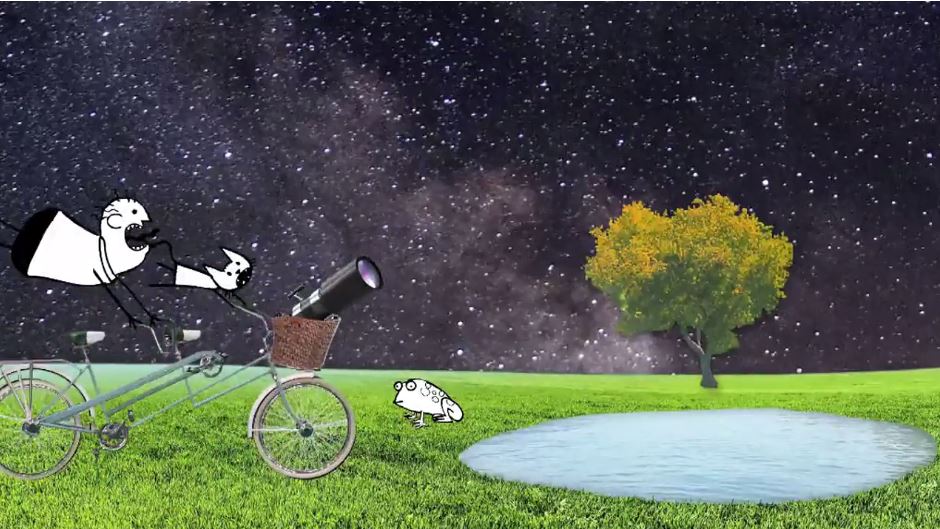What's the big deal about Gaia?
Duration: 1 min 13 secs
Share this media item:
Embed this media item:
Embed this media item:
About this item

| Description: | Just how do you go about creating a 3D map of a galaxy? How many stars would that even be? And how can we know the distances to the stars if we can't travel to them? |
|---|
| Created: | 2014-01-21 12:04 | ||
|---|---|---|---|
| Collection: | Gaia in one minute | ||
| Publisher: | Institute of Astronomy | ||
| Copyright: | Institute of Astronomy | ||
| Language: | eng (English) | ||
| Keywords: | Gaia mission; | ||
| Credits: |
|
||
| Abstract: | Just how do you go about creating a 3D map of a galaxy? How many stars would that even be? And how can we know the distances to the stars if we can't travel to them?
Find out here how the Gaia spacecraft will answer these questions. This cartoon is part of a series following one man and his cat as they learn about space, created by Angel Eye Media and the Gaia team in Cambridge. Narrated by Dara O Briain. |
|---|---|
Transcript
Transcript:
Dara Ó Briain:
The Gaia satellite is going to take a census of 1 per cent of the stars in the Galaxy.
Which at first sight doesn’t seem very much.
But, on closer examination, 1 per cent of the Galaxy is a billion stars.
Which is a lot more than a six thousand that we can see with a naked eye.
And Gaia in not just going to be counting them.
It will be measuring the Doppler shift to check their speeds, mapping their positions, measuring their distances from us using a technique called parallax, taking their temperatures and working out what they‘re made of.
So from now on, when we study the Galaxy, it will be like when someone incredibly short-sighted putting on a pair of glasses for the first time - and 3D glasses at that.
And, once we know the speeds and distances of the stars, we can tell the difference between how much we think the Galaxy should weigh and how much it actually does weigh.
And, therefore, how much other stuff must be there as well.
Whether it’s dark matter or something else.
The Gaia satellite is going to take a census of 1 per cent of the stars in the Galaxy.
Which at first sight doesn’t seem very much.
But, on closer examination, 1 per cent of the Galaxy is a billion stars.
Which is a lot more than a six thousand that we can see with a naked eye.
And Gaia in not just going to be counting them.
It will be measuring the Doppler shift to check their speeds, mapping their positions, measuring their distances from us using a technique called parallax, taking their temperatures and working out what they‘re made of.
So from now on, when we study the Galaxy, it will be like when someone incredibly short-sighted putting on a pair of glasses for the first time - and 3D glasses at that.
And, once we know the speeds and distances of the stars, we can tell the difference between how much we think the Galaxy should weigh and how much it actually does weigh.
And, therefore, how much other stuff must be there as well.
Whether it’s dark matter or something else.
Available Formats
| Format | Quality | Bitrate | Size | |||
|---|---|---|---|---|---|---|
| MPEG-4 Video | 1280x720 | 2.95 Mbits/sec | 26.96 MB | View | Download | |
| MPEG-4 Video | 640x360 | 1.73 Mbits/sec | 15.79 MB | View | Download | |
| WebM | 1280x720 | 2.26 Mbits/sec | 20.91 MB | View | Download | |
| WebM | 640x360 | 1.36 Mbits/sec | 12.59 MB | View | Download | |
| iPod Video | 480x270 | 502.51 kbits/sec | 4.48 MB | View | Download | |
| MP3 | 44100 Hz | 252.56 kbits/sec | 2.25 MB | Listen | Download | |
| Auto * | (Allows browser to choose a format it supports) | |||||

